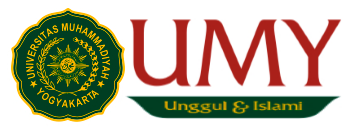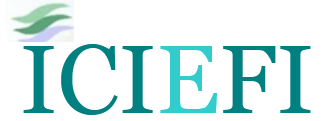Patronage Factors of Motor Vehicle Takaful in Kano State, Nigeria
Abstract
Keywords
Full Text:
PDFReferences
Ado, A. (2014). Nigeria: Where are we? The Islamic finance handbook, 355-368.
Ajzen, I. (1985). From intentions to actions: A theory of planned behavior. In Action control (pp. 11-39). Springer, Berlin, Heidelberg.
Ajzen, I., & Fishbein, M. (1980). Understanding attitudes and predicting social behaviour. Englewood Cliffs, NJ: Prentice-Hall.
Amin, H. (2007). Borneo Islamic automobile financing: Do demographics matter? Labuan e-Journal of Muamalat and Society (LJMS), 68-81.
Ardo, A. A., & Saiti, B. (2017). Takaful practice in Nigeria: history, present and futures. European Journal of Islamic Finance, (8).
Armitage, C. J., & Conner, M. (2001). Efficacy of the theory of planned behavior: A meta‐analytic review. British journal of social psychology, 40(4), 471-499.
Armitage, C. J. (2005). Can the theory of planned behavior predict the maintenance of physical activity?. Health psychology, 24(3), 235.
Aziz, S., Md Husin, M., & Hussin, N. (2017). Conceptual framework of factors determining intentions towards the adoption of family takaful-An extension of decomposed theory of planned behaviour. International Journal of Organizational Leadership, 6(1) 385-399.
Barclay, D., Higgins, C., & Thompson, R. (1995). The Partial Least Squares (PLS) approach to causal modelling: Personal computer adoption and use as an illustration. Technology Studies, 2(2), 285–309.
Bello, G. B., & Ayuba, H. (2014). Perception of Consumers (Income-Earners) on Islamic Insurance (Takaful) Services’ Consumption in Kano State, Nigeria: A Paper presented at the 1st international conference of the International Institute of Islamic Banking and Finance, Bayero University, Kano, Nigeria, April 17-19.
Bhattacherjee, A. (2000). Acceptance of e-commerce services: the case of electronic brokerages. IEEE Transactions on systems, man, and cybernetics-Part A: Systems and humans, 30(4), 411-420.
Chin, W. W., & Newsted, P. R. (1999). Structural equation modeling analysis with small samples using partial least squares. Statistical strategies for small sample research, 1(1), 307-341.
Chin, W. W. (1998). Commentary: Issues and Opinion on Structural Equation Modelling. MIS Quarterly, 22(1), 7–16. DOI: http://doi.org/Editorial
Cho, H. C. & Abe, S. (2013). Is two-tailed testing for directional research hypotheses tests legitimate? Journal of Business Research, 66(9), 1261– 1266. DOI: http://doi.org/10.1016/j.jbusres.2012.02.023
Churchill, G. A. & Lacobucci, D. (2004). Marketing Research: Methodological Foundations. Structural Equation Modelling, 4.
Cohen, J. (1988). Statistical power analysis for the behavioural sciences. Statistical Power Analysis for the Behavioural Sciences. http://doi.org/10.1234/12345678
Dandago, K. I. (2012). “Takaful” (Islamic Insurance): Historical background, Misconception, challenges and Products, Islamic Economics: A Book of Readings, The International Institute of Islamic Thought Nigeria Office (IIIT). ISBN:978-978-927-978-4.
Darazo, Z. S. (2011). Takaful Insurance Implementation: A Drive towards Inclusive Insurance sectors in Nigeria. National Insurance Commission of Nigeria.
Duarte, P. A. O. & Roposo, M. L. B. (2010). A PLS model to study brand preference: an application to the mobile phone market. In Handbook of partial least squares: concepts, methods and applications (449–485) http://doi.org/10.1007/978-3-642-16345-6
Fishbein, M. & Ajzen, I. (1975). Belief, Attitude, Intention and Behaviour: An Introduction to Theory and Research, Reading MA Addison Wesley.
Fornell, C. & Larcker, D. (1981). Evaluating structural equation models with unobservable variables and measurement error. Journal of Marketing Research, 18(3), 39–50. http://doi.org/10.2307/3151312
Fukukawa, K. (2002). Developing a framework for ethically questionable behavior in consumption. Journal of Business Ethics, 41(1-2), 99-119.
Geisser, S. (1974). A predictive approach to the random effect model. Biometrika
Hair, J. F. J. Hult, G. T. M., Ringle, C. & Sarstedt, M. (2014). A Primer on Partial Least Squares Structural Equation Modelling (PLS-SEM). ). Sage publications.
Hair, J. F., Black, W. C., Babin, B. J., Anderson, R. E., & Tatham, R. L. (2010). Multivariate Data Analysis. Vectors (7th ed.). Edinburgh: Pearson Education Limited. http://doi.org/10.1016/j.ijpharm.2011.02.019
Hair, J. F., Ringle, C. M., & Sarstedt, M. (2013). Partial Least Squares Structural Equation Modelling: Rigorous Applications, Better Results and Higher Acceptance. Long Range Planning, 46(1), 1–12. http://doi.org/10.1016/j.lrp.2013.01.001
Hair, J. F., Ringle, C.M., & Sarstedt, M. (2011). PLS-SEM: Indeed, a Silver Bullet. The Journal of Marketing Theory and Practice, 19(2), 139–152. http://doi.org/10.2753/MTP1069-6679190202
Hair, J. F., Sarstedt, M., Ringle, C. M., & Mena, J. A. (2012). An assessment of the use of partial least squares structural equation modeling in marketing research. Journal of the Academy of Marketing Science, 40(3), 414–433. http://doi.org/10.1007/s11747-011-0261-6
Hair, J. F., Sarstedt, M., Ringle, C. M., & Mena, J. A. (2012). An assessment of the use of partial least squares structural equation modeling in marketing research. Journal of the Academy of Marketing Science, 40(3), 414–433. http://doi.org/10.1007/s11747-011-0261-6
Haque, A., J. Osman and A.Z.H. Ismail, (2009), “Factor influences selection of Islamic
banking: A study on Malaysian preferences”, American Journal of Applied Sciences, vol. 6(5) 922-928.
Henseler, J., Ringle, C. M., & Sinkovics, R. R. (2009). Advances in International Marketing. Advances in International Marketing, 20, 277–319. http://doi.org/10.1016/0167-8116(92)90003-4
Henseler, J., Ringle, C. M., & Sinkovics, R. R. (2009). The use of partial least squares path modelling in international marketing. Advances in International Marketing, 20(1), 277–319. http://doi.org/10.1016/0167-8116(92)90003-4
Hulland, J. (1999). Use of Partial Least Squares (PLS) in Strategic Management Research: A Review of Four Recent Studies. Strategic Management Journal, 20(2), 195–204. http://doi.org/10.1002/(SICI)1097-0266(199902)20:2<195::AID-SMJ13>3.0.CO;2-7
Husin, M.M. & AbRahman, A. (2016). A review of intention-behaviour theories: how useful are these for measuring consumer intention to participate in family Takaful?
Ishak, S & Zabil, N.F.M. (2012). Impact of Consumer and Knowledge to Consumer Behaviour. Asian Social Science 8, no. 13.
Khan, M.S.N., Hassan M. K., & Shahid A. I. (2008). Banking behaviour of Islamic bank customers in Bangladesh. Journal of Islamic Economics, Banking and Finance, 159 – 194.
Lateh, N., Ismail, S., & Ariffin, N.M. (2009). Customers ‘perceptions on the objectives, characteristics and selection criteria of Islamic bank in Thailand. Gadjah Mada International Journal of Business, 11(2), 167-189
Madden, T. J., Ellen, P.S & Ajzen, I. (1992). A Comparison of the Theory of Planned Behaviour and the Theory of Reasoned Action. Personality and Social Psychology Bulletin 18(3): 3-9.
Maiyaki, A & Ayuba, H. (2015). Consumers’ attitude toward Islamic insurance services (Takaful) Patronage in Kano State, Nigeria. International Journal of Marketing Studies, 7(2), 27–34.
McDaniel, S. W & Burnett, J. J., (1990). Consumer religiosity and retail store evaluative criteria. Journal of the Academy of Marketing Science, 18(2), 101-112.
National Bureau of Statistics (2017). NBS (National Bureau of Statistics bulleting) and MOFP.
National Insurance Commission (2016). Consolidation of Nigeria Insurance Industry. NAICOM Publications, Abuja
Nigerian Stock Exchange (2019) report. https://www.vanguardngr.com/2019/12/nigerian-insurance-industry-ranks-62nd-in-the-world
Odoemene, A. C. (2013). African Women and Economic Development. The Nigerian Experience, Paper Presented at South African Sociological Association (SASA) Annual Congress
Osman, A. F., Mohammed, M. O., & Amin, H. (2014). An analysis of cash waqf participation among young intellectuals. Paper presented at Istanbul 9th International Academic Conference (IIES), Turkey.
Outreville, J.F. (1997). Theory and Practice of Insurance, Massachusetts, USA, Kluwer Academic Publishers, p.26.
Saleh, M. M. (2016). Challenges in Takaful application within conventional insurance framework in Nigeria, the imperative for legislative harmonization of regulatory instruments. Degree of doctor of philosophy faculty of law university of Malaya Kuala Lumpur.
Saleh, M. M., Balan, S.A. & Ruslan, M.K. (2016). Learning from the Malaysian Experience: Overcoming the regulatory challenges in the nascent Takaful practice in Nigeria. Journal of politics and law, 9(1), 142-159.
Stone, M. (1974). Cross-validator choice and assessment of statistical predictions. Journal of the Royal Statistical Society. Series B(Methodological), 3(2), 111–147.
Syed, S & Nazura M.S (2011) Applying the theory of planned behavior in food purchasing. International journal of commerce and management
Taro, Y. (1967). How to Calculate a Reliable Sample Size Using Taro Yamane Method.
Worthington Jr., E. L., Wade, N. G., Hight, T. L., McCullough, M. E., Berry, J. T., Ripley, J. S., Berry, J. W., Schmitt, M. M., Bursley, K. H. & O’Connor, L. (2003). The Religious Commitment Inventory-10: development, refinement, and validation of a brief scale for research and counselling. Journal of Counselling Psychology, 50(1), 84-96.
Yaqub, H. (2016). The awareness, perception and self-efficacy of commercial vehicle owners towards motor Takaful in Kano State. An unpublished M.sc thesis, international institute of Islamic banking and finance, Bayero University Kano, Nigeria
Yaqub, H. A. & Dandago, K.I. (2015). Determinants of motor Takaful patronage among commercial vehicle operators: a conceptual review. 1st Academic Conference of the Institute of Chartered Accountants of Nigeria.
Yusuf, T.O. (2012). Prospects of Takaful's (Islamic Insurance) Contributions to the Nigerian Economy. Journal of Finance and Investment Analysis, 217- 230.
DOI: https://doi.org/10.18196/ijief.v5i2.14970
Refbacks
- There are currently no refbacks.
Copyright (c) 2022 International Journal of Islamic Economics and Finance (IJIEF)

This work is licensed under a Creative Commons Attribution-ShareAlike 4.0 International License.
International Journal of Islamic Economics and Finance (IJIEF)
International Program for Islamic Economics and Finance
Department of Economics
Faculty of Economics and Business
Universitas Muhammadiyah Yogyakarta
Pascasarjana Building, Ground Floor
Jl. Brawijaya (Ringroad Selatan), Kasihan, Bantul
D.I. Yogyakarta 55183, INDONESIA
Official email: ijief@umy.ac.id












1.jpg)